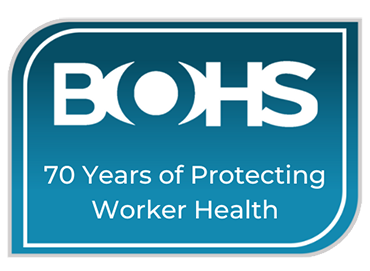Ototoxic chemicals are a collection of compounds that can adversely affect some parts of the ear, regardless of exposure to noise. However, when ototoxic exposure is combined with noise exposure, the combined effect may be additive or even synergistic. Ototoxic chemicals can contribute to sensorineural hearing loss, which is often permanent due to the adverse negative effects on the auditory nerve and inner ear hair cells and the limited ability of these cells to repair themselves effectively. Ototoxic chemicals can be placed into two categories: workplace chemicals and medication - for example, hydroxychloroquine can temporarily damage hearing if used for a prolonged time.
Which chemicals are ototoxic?
Approximately 750 chemicals are thought to be ototoxic, but research is still in progress. Amongst those with the most evidence are:
- Aspirin
- Hydroxychloroquine
- Certain aminoglycoside antibiotics
- Solvents such as ethylbenzene, styrene, toluene, p-xylene, n-hexane.
- Asphyxiants such as carbon monoxide and hydrogen
- Nitriles
- Hydrocarbons such as toluene, p-xylene and benzene
- Acrylonitrile
- Lead, tin & mercury.
Metals and metal compounds such as cadmium, cadmium chloride and arsenic, insecticides and tobacco smoke are amongst other chemicals also suspected to have ototoxic properties.
How do ototoxic chemicals enter the body?
Due to the vast range and properties of chemicals and substances proven or considered to be ototoxic, there are many ways individuals could be exposed including inhalation, ingestion, absorption through skin contact and, specifically within the medical industry, injection.
Which industries or workplaces are likely to work with ototoxicants?
Industries that use potential ototoxicants include manufacturing, mining, utilities, construction & demolition, aviation, agriculture and some occupations within the military.
Manufacturing industry subsectors include:
- Fabricated metal
- Machinery
- Leather and allied products
- Textile and apparel
- Petroleum
- Paper
- Chemical manufacture (including paint and glue)
- Furniture and carpentry
- Transportation equipment (e.g. ship and boatbuilding)
- Electrical equipment, appliances and components (e.g. batteries)
- Solar cell.

How do ototoxic chemicals work in combination with noisy work environments?
Those working in industries that utilise ototoxic chemicals in combination with loud machinery are at a higher risk of potential severe hearing loss. Loud noises can traumatise the hair follicles and fragile membranes of the inner ear much the same way some ototoxic chemicals do. This, in combination with the ototoxicants' effect on the cochlea, auditory nerve and the auditory pathway, increases the chance of hearing loss as well as its severity.
What steps can be taken to reduce the risk of ototoxic exposure?
In the UK, regulation 5(3)(c) of Control of Noise at Work Regulations 2005 makes it a statutory requirement to assess the effect of ototoxic chemicals on the health and safety of employees:
(3) The risk assessment shall include consideration of –
(c) as far as is practicable, any effects on the health and safety of employees resulting from the interaction between noise and the use of ototoxic substances at work, or between noise and vibration.
When ototoxicants are identified in the workplace, risk reduction steps can include replacing the hazardous chemical with a less toxic alternative when possible and, where ototoxicants cannot be eliminated from the workplace, engineering controls like ventilation, isolation and enclosures should be considered.
The elimination of unnecessary tasks that cause noise or ototoxic exposure should also be assessed. Since many ototoxic substances can be absorbed through the skin, chemical-protective gloves, arm sleeves, aprons and other appropriate clothing can assist in reducing dermal exposure. Some ototoxic chemicals (hydrocarbons and asphyxiants) can be detected using gas detection equipment such as wearable or handheld VOC detectors or fixed systems installed in high-risk areas. These tools can be used in conjunction with wearable dosimeters to ensure risks are accurately monitored and identified as part of workplace risk assessment.
Shawcity has a range of VOC detection and noise dosimetry instrumentation available to hire or buy which can be deployed as part of an ototoxic risk assessment. For any further information or to arrange a free site visit, contact us: 01367 899553 or email: solutions@shawcity.co.uk.
.jpg)
-1.png)









